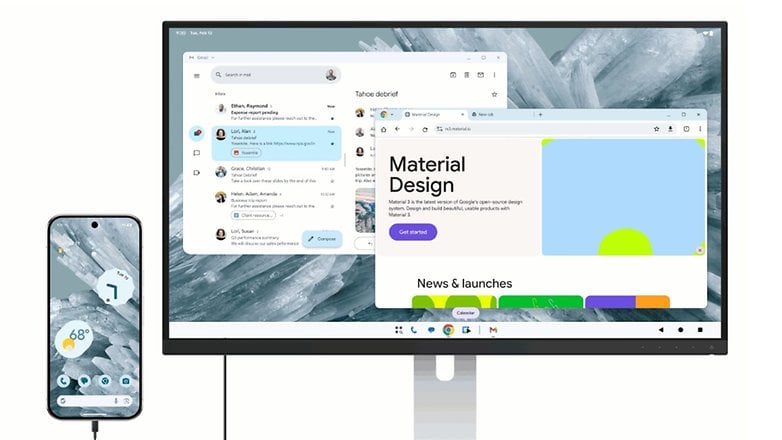Google’s Plan to Topple Windows and macOS Might Just Be Crazy
For many years, Android and Chrome OS have shared some core DNA and features, allowing seamless service integration and cross-platform app functionality. However, they have existed mainly separately, keeping their development paths distinct. Following earlier reports of the two operating systems merging, Google has finally confirmed this.
Back in November last year, there was heavy speculation (via Android Authority) that Google was moving Chrome OS to the Android platform, which would allow the company to streamline the development of two different OSes.
The chatter was almost on point. Sameer Samat, President of the Android Ecosystem at Google and a veteran at the company, confirmed in a recent interview with TechRadar that they indeed plan to combine the two operating systems into a “single platform.”
This confirmation not only solidifies the initiative but also strongly suggests that Google’s eventual aim is to create a more powerful, unified system that combines the best features and flexibilities of both platforms. This also opens the door for the company to provide an ultimate alternative that would directly challenge iPadOS or even macOS for Apple’s MacBooks and Microsoft’s Windows.
Why Google Wants a Unified Operating System
It has become more apparent that Google envisions combining the two OSes into one platform would give them an edge in boosting the usability and flexibility of a single operating system. For instance, they would no longer need to develop each OS separately, nor would app developers need to target two distinct platforms.

At the same time, they likely want to harness the advantages of each platform, such as Chrome OS’s strength in supporting large-screen devices like laptops and its cloud-centric workflow. With a merged platform, this could also open the door for Google to bring Android’s gesture-driven UI to these larger form factors.
It was also hinted in the latest development of Android that Google intends to bring features from the two platforms. In Android 16, the major OS has gained a more powerful desktop mode when connecting to external displays and PC accessories, along with wider support for canvas mode on tablets.
All that said, there’s still no clear layout for how Google will market its combined operating system in the future, or even what name it will give it. But what’s clear is that it wants to bet on this to challenge the platforms of large-screen devices and PCs, which are mostly dominated by Apple and Microsoft.
What are your thoughts on Google combining Android and Chrome OS into one? Do you think this was long overdue and should have been made earlier? We’d like to hear and discuss your answers in the comments.